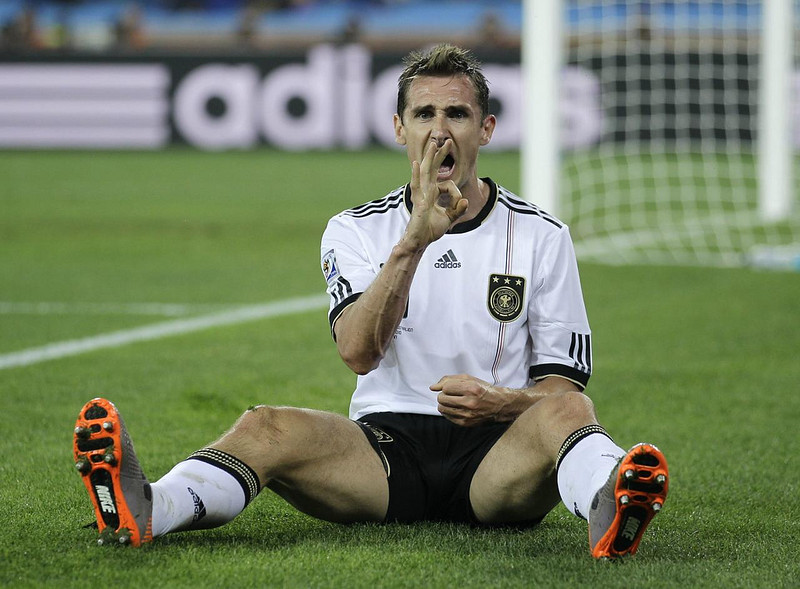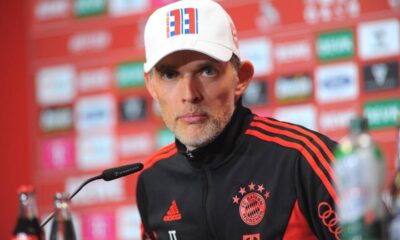Bundesliga
Miroslav Klose was a carpenter when he was 19 and played in the German 5th league when he was 20. What is the story of the best ever World Cup goal scorer?
Miroslav Klose. Modest, unassuming, almost easily forgettable. But he is one of the greatest legends of German football. He was a goal scorer, especially in the national team and specifically at the World Cups, when nobody scored more goals than him. What is his story?

Miroslav Klose. Modest, unassuming, almost easily forgettable. But he is one of the greatest legends of German football. He was a goal scorer, especially in the national team and specifically at the World Cups, when nobody scored more goals than him. What is his story?
The Polish-born boy was not supposed to have a great future in football
19. june 1978, Opole. In the Silesian town on the Odra River, a certain Miroslav Klose was born. Back then, under the communist regime. Both his parents were professional sportsmen. His father played football, his mother handball. So it was to be expected that Miroslav himself would be a sportsman.
When he was 8 years old, he ran away with his family to West Germany. But even so, a great sporting career did not take place immediately from childhood. He started digging in Blaubach, today a village of around 500 inhabitants.
In Blaubach he played in the 7th German league. Besides playing football, he trained as a carpenter and made a living for a while. It was no longer too much to expect that he would perhaps make a living from football. After all, it wasn’t until he was 20 that he looked into the 5th league when Homburg acquired him. He proved himself in his reserve team and also played in the A-team.
At the age of 20, many talented players break into the A-teams in the top competitions. They’re talked about as stars. Klose, however, was outside all that.
Klose got into the Bundesliga almost by a miracle
Kaiserslautern had no idea what a star they had brought in
As already mentioned, Miroslav Klose’s football career didn’t look like a great one. But he was very lucky. A scout representing the famous Kaiserslautern team turned up at the Homburg match.
Today, Kaiserslautern plays in the third league, but it is a traditional club that won the Bundesliga twice in the 1990s. It has a great history and an even greater fan base. So when the offer came, there was no hesitation.
He started out in the reserves, where he showed great shooting potential. In his first year at Kaiserslautern, he also played in the Bundesliga. However, he was not expected to be a team leader, let alone one of the best players of his generation. But it happened.
And it happened pretty quickly. He worked his way up to the A-team in his second season (2000/01) at the club and netted 11 competitive goals. He also made his mark in the UEFA Cup. And the third season? That was a fairy tale. Klose scored 16 goals and was the Bundesliga’s second top scorer.
It’s worth noting that in his second season at the club, he was invited to join the German national team. He turned down the Polish one and has no regrets. He waited only a few minutes for his first national team goal. He scored in both of the first two games. In 2002, Klose was already a key player in Germany’s run to the World Cup finals. He scored five goals. But the Germans finished second.
While Klose’s star was rising, Kaiserslautern’s was exactly the opposite. It was clear that a better address would not pass. And after five years, it did. From a player who came more or less by miracle, Klose has developed into a mainstay and has played 147 games for the club with a record of 52 goals and 20 assists.
He had a great time in Bremen and won a contract at Bayern
Miroslav Klose has left Kaiserslautern for Werder Bremen. The latter is not currently among the Bundesliga’s top teams, but it was a different story back then. The already proven striker was bought by the North German team as the newly crowned champion of the German league. He was to replace the Brazilian sharpshooter Alton.
And he more or less succeeded. Although typologically a different player, nobody could deny Klose’s flair for goals. On the contrary. He formed a very striking duo with Ivan Klasnic, especially in the first two seasons. In the second season, Klose became the Bundesliga’s top scorer with 25 goals. He also won the League Cup for Bremen.
In the same season, namely 2005/06, he also shone at the World Cup, which was then hosted by Germany. With 5 goals he was the top scorer of the championship and helped Germany to third place. He stayed at Werder for another year and then went to Bayern. His record at Bremen? 132 games, 63 goals, 47 assists.
It’s worth noting that Klose came to Werder for 5 million euros. He was sold to Bayern for 15 million.
At Bayern, he faced huge competition, but he kept on scoring for the national team
The legendary Roy Makaay was leaving Munich when Bayern acquired Miroslav Klose. However, that doesn’t mean the acclaimed German striker’s place is secure. On the contrary. He faced more competition than ever.
Lukas Podolski was fighting for a place at Bayern at the time, and Italian Luca Toni was hosting the goal scoring feast. And that wasn’t all. Ivica Olic and Mario Gomez, for example, competed with Klosem, while the talented Thomas Müller was also able to provide a spike.
No wonder Klose’s minutes suddenly dropped. Of course, the more frequent injuries also played a part in this, but Bayern had such a variable line-up during each year Klose was there that it may well have been to the detriment of the German legend.
In four seasons he played 150 games, scoring 53 goals and adding 27 assists. In terms of numbers, this is his worst engagement. But he was able to enjoy eight trophies, including two league ones.
And although things weren’t quite the same at Bayern, when the next World Cup came around in 2010, Klose was back in the thick of things. This time, he scored only four goals and once again led Germany to third place.
Italy’s resurrection and the quest for the record and the World Cup title
He became an idol at Lazio and had a great end to his career
In 2011, Miroslav Klose left Bayern Munich as a 33-year-old veteran who, as already mentioned, was also plagued by health problems. Lazio Rome acquired him as a free agent. It is questionable whether anyone in the club’s management expected what would follow.
The arrival of the German striker raised hell. The modest, fair and likeable footballer quickly became an idol. Not only because of his performance on the pitch. But of course, they’ve helped him a lot.
In five seasons, he became the club’s top scorer three times. But what gained notoriety outside his performances was, for example, when he scored a goal with his hand and, although the referee didn’t see it, he admitted to it himself. In short, a phenomenon.
He also finished his career at Lazio in 2016. He played 171 games for the Italian club, netting 63 goals and adding 35 assists. It is safe to say that it was from the Italian fans that he received the greatest accolades of his career.
In 2014, he made the biggest history
Before he retired, he also experienced his last ride at the World Championship. It wasn’t much of a possibility, but in the end Klose claimed a place in the nomination for the 2014 World Championships as well. That took place in Brazil. He was already 36 years old and Germany had a more than decent player base then.
But still! Klose played more of a joker role at the championship, but he still added two goals that made him a legend. He even scored one of them for the home team Brazil in their now legendary 7-1 victory.
Moreover, in Ronaldo Nazário’s home country, he broke his record for the most goals scored at World Cups. He scored a total of 16.
To make matters worse, the top scorer of the World Cup finally got his hands on the trophy that fits this record beautifully. And that’s for the winner of the world championship. Even though he didn’t play in the final, it’s a fantastic achievement.
After the World Cup, Klose retired from the national team. With 71 goals, he is the top scorer in the history of the German national team. Interestingly, he didn’t score nearly as much at the Euros as he did at the World Cup. He scored 3 times in three European championships.
Source: The Versed, Bundesliga, Transfermarkt, These Football Times








